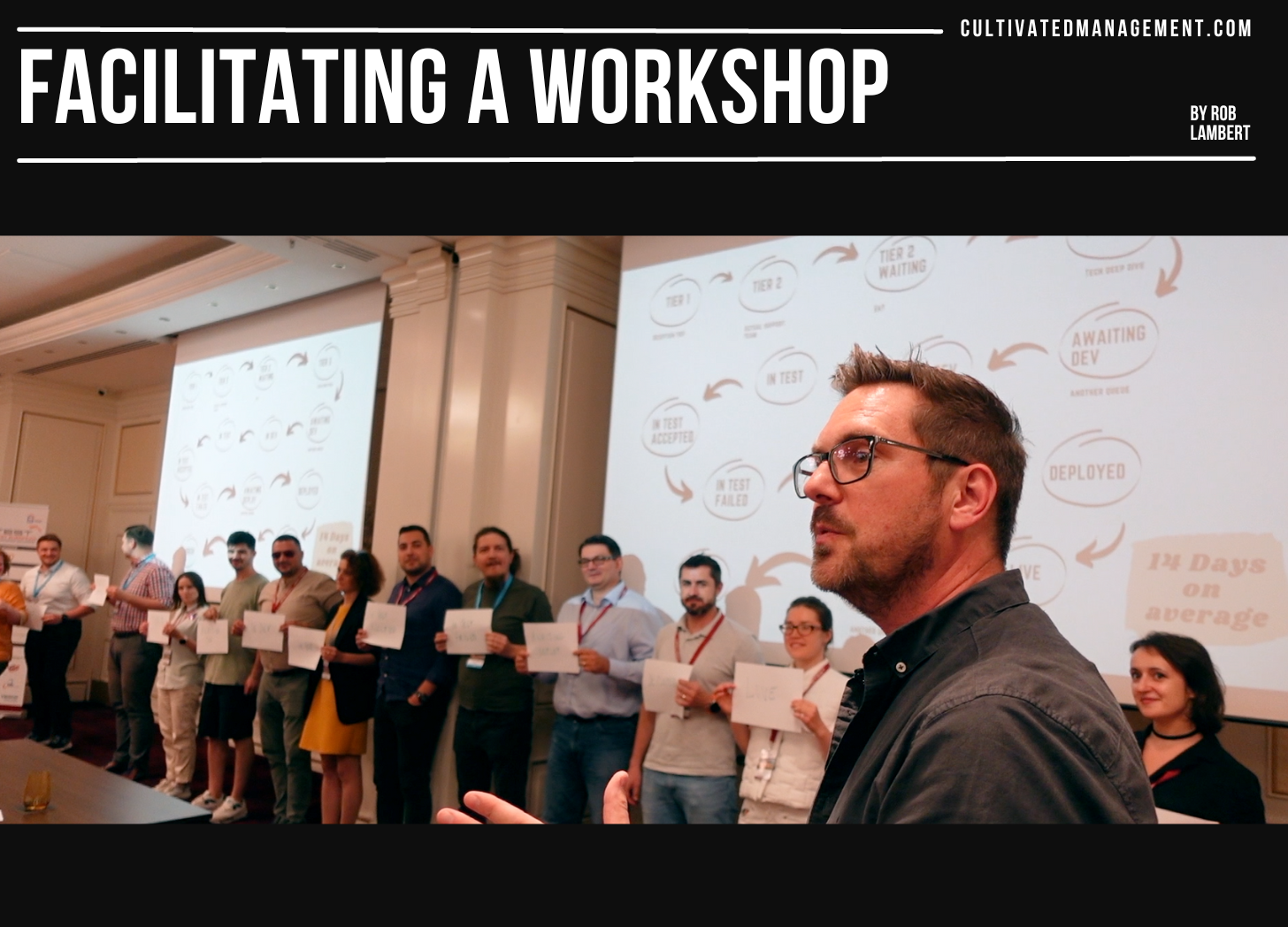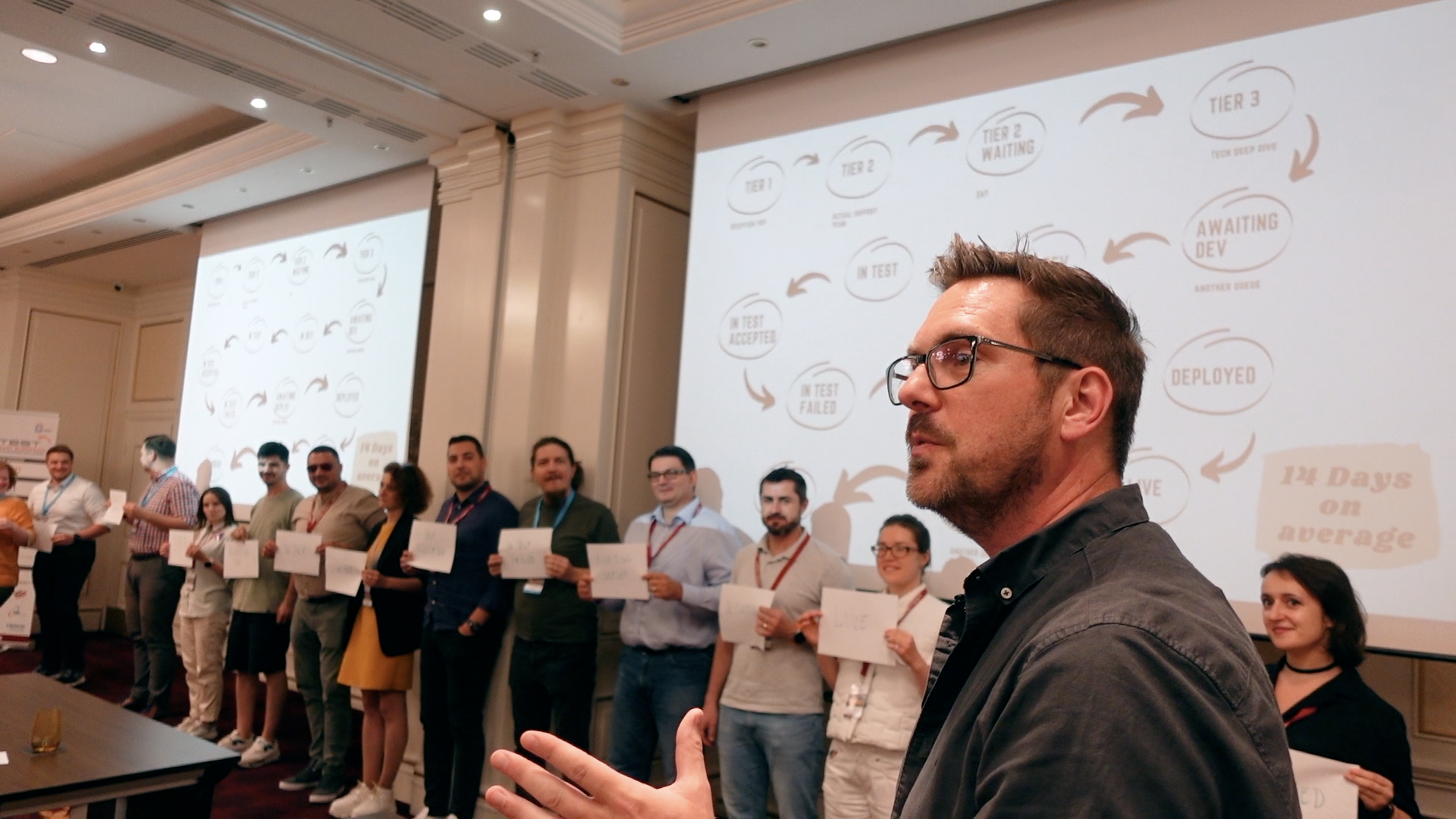
Facilitating and running a teaching workshop at a conference, event or within a company is not just a case of turning up and hoping for the best. There's plenty more to it and in this article and video, I share 11 tips for running a successful workshop.
I have three main workshops that I take to conferences and companies. Each one has won "best workshop" awards (multiple times) and is highly rated by business clients.
It's not down to my winning charm (don't laugh), nor is it purely down to knowing my subject matter well - it's down to preparation, enthusiasm and a focus on the students/learners.
Check out the video for behind the scenes and an explanation of the following 11 ideas:
Here's a podcast episode along the same topic line as this - but I cover 10 similar, but different ideas.
How to run a workshop
Prepare and Practice – after all practice is preparation
The audience have turned up and the courteous thing to do – is reward them for their investment. This requires plenty of preparation.
You're goal is to take the students on a learning journey from point A to point B. What are those two points? What will the journey look like? How will you take them on this journey?
You'll need to define the subject well - and of course, be sure you're an expert on it. You'll need a lesson plan that weaves in different learning and teaching methods and models. (My new book will cover this in depth - along with the very lessons plans that I use to win awards).
You'll need a plan. You'll also need to know how and when to deviate from the plan. The plan is not the goal - teaching and learning is. However, without a plan you run the risk that you miss core points, truths, principles or lessons - or you go too slow/fast for the students.
Practice the plan. Learn from each workshop. Make it better always.
Set constraints
Without constraints your workshop runs the risk of being unmanageable
and therefore degrading the quality for all, as well as being a nightmare to run.
Constraints are important. If you can only teach 30 people ensure the limit is 30 people. If you're only sticking to topics a, b and c - only stick to a, b and c.
You'll need to put some boundaries and constraints around the workshop to be sure you hit your purpose; to teach.
If you are an expert in a particular subject (and let's hope so as you're going to teach it to others), then be aware that you will know much more than you aim to teach. Don't add in more to the lessons than required. It's easy to also assume a level of knowledge some students may not have.
This is why constraints - and expectations up front, as so important. If you've said the workshop is for expert, then pitch at this level.
Scope the room
When you get to the venue, scope out the room to see what it’s like and if there will be any logistical problems (room layout, blind spots, etc).
This is the same advice I offer for conference speakers too in my Zero to Keynote book. By scoping out the room before your workshop (or talk), you give yourself time to adjust the plan, prepare mentally and work out how you are going to engage everyone in the room.

Zero To Keynote
A field guide for the budding conference speaker.
Learn how to overcome the fear of public speaking, go from idea to talk, get your submission accepted, deal with speaker's remorse - and structure, then deliver, a talk worthy of being a Keynote.
You will never get it just right
I try to ensure all of my workshops have a 50/50 split between interaction and lecture/practice. It all depends on the subject too but from 10+ years of running workshops I know with certainty that you will never get this balance right.
Some people will say they want more interaction and some will say they want less.
You will never get it spot on.
50/50 works for me. I also have an opening slide explaining how I will get it wrong but will try my hardest.
No matter what ratio you go for - ensure you avoid the cardinal sin of teaching - making it dull. More on that in a minute.
Prep the room
Before the workshop begins ensure you turn up in time to prep the room. Prepping the room will be contextual but for me, it is about ensuring the seating structure has been laid out as requested and checking I have all materials to hand.
I scatter post-it notes and pens around the tables and check my own IT equipment is plugged in and notifications are turned off.
If it is being filmed or recorded - then I work with the Tech crew and check everything - well before any students have turned up. I check my slides and that my remote clicker is working.
Same as I would for a Keynote or presentation.
Go easy on the social
It can be tempting to indulge in the food and drink at conferences, but waking up with a hang-over and then having to bring the energy can be hard (next point).
The social events at conferences and events are fun - no denying that I like that aspect of going to conferences, but don't let the social get in the way of showing up and giving your best for the students.
The entire workshop should be geared around teaching people something. That's hard to do with a hang-over and 2 hours sleep.
Bring energy and enthusiasm - don't make it dull
Dullness kills learning. Do everything you can to avoid being dull. This does not mean bouncing around and being overly enthusiastic. Far from it - that is distracting unless that's your style.
Dullness is countered by bringing energy to the room, focusing on your well thought through lesson plan and engaging the students in various activities.
You will need to read the room and note when energy and attention are waning - and do something to recapture it. Don't lecture all day in a boring way and don't mumble and speak quietly. Confidence in yourself and your ability to teach the subject should come through.
Engage the students in well thought out transitions between learning and teaching methods - and seamless but logical transitions between subject matter.
Don't have bad slides and bad handouts. Prep is key here.
Avoid at all costs making the session dull - dullness will dampen the spirit of even the most interested student.
Dullness is a sin when it comes to workshops. And my words - I have seen some dull workshops.
Clear instructions
It’s important that you set clear instructions for the interactive / practical parts.
This avoids confusion, mitigates delays from questions and ultimately, ensures everyone gets the most from the practicals.
If you have to repeat your instructions several times, then learn how to avoid this.
Any practical or interactive session should be simple to get going and clear in the mind of the student what the goal of it is. Pointless interactive sessions are common - as a way for the teacher to avoid dullness - but busy, brain engaging work with no clear outcome is a waste of time.
Focus on the learning activity and be sure it's clear and easy to follow. Generally speaking, the clearer the activity the more space is left for learning.
This doesn't mean you have to make the interactive sessions simple and noddy - far from it - but the instructions and guidance on how to take part should be clear. Consider some slides to support and rules/boundaries of the activity.
Above all else - ensure it is relevant and leads to deeper understanding of the subject at hand.

Teach something interesting
It goes without saying that you should be teaching a topic that is interesting to you. If you're not interested in it, or enthusiastic about it, why would your students be?
There will be problems
There will be challenges and problems throughout the day. Expect this and anticipate what some of these will be - then plan to mitigate against them.
Learn how to deal with problems that do arise - and put that thinking into the lesson plan itself. A good lesson plan with timings, materials and varying teaching methods will help you deal with problems on the day.
The plan is not the goal but if you find yourself throwing the plan out - your plan was wrong.
Get back on track, spend some extra time in one area, and trim it from somewhere else. Work with students, answer questions and encourage more learning. Encourage students to share between themselves - some people will understand the subject better than others.
Deal with unruly people by being kind and supportive. Deal with tech faults with care and ease. Deal with a lack of comprehension as a way to improve your teaching. And keep learning yourself.
The more you deal with problems, the better your toolkit becomes and the easier it is to pivot when needed.
Have fun. Not forced fun. But fun. Like proper fun.
It should be enjoyable to teach others. It should be enjoyable to learn. If you've avoided making the session dull you are half-way there.
It should be pleasing to see the moments of learning, the tough questions, the listening, the feedback.
If people don't look like they're having fun you've got something wrong. It's not a time for giddiness, silliness and stand up comedy, but learning something is always more successful when it's fun. What can you do to inject your personality into the workshop, add some fun, maybe a little humour - and more importantly, help your attendees bring their personalities to the lessons?
If you’d like me to bring any of my workshops, or talks, to your company or event, give me a shout.
